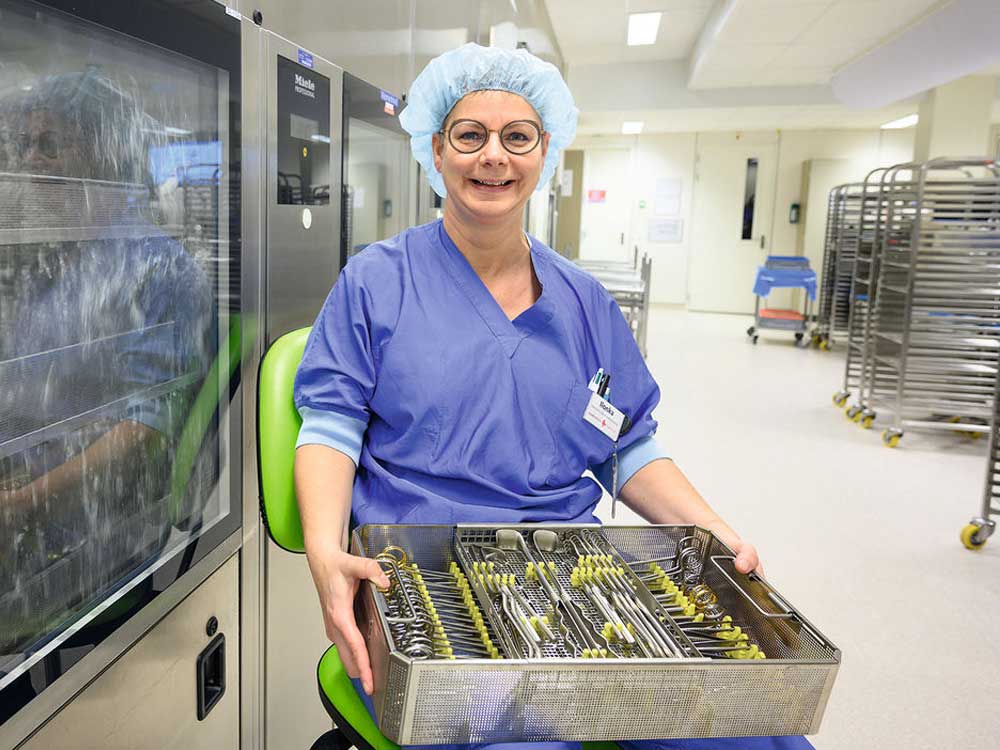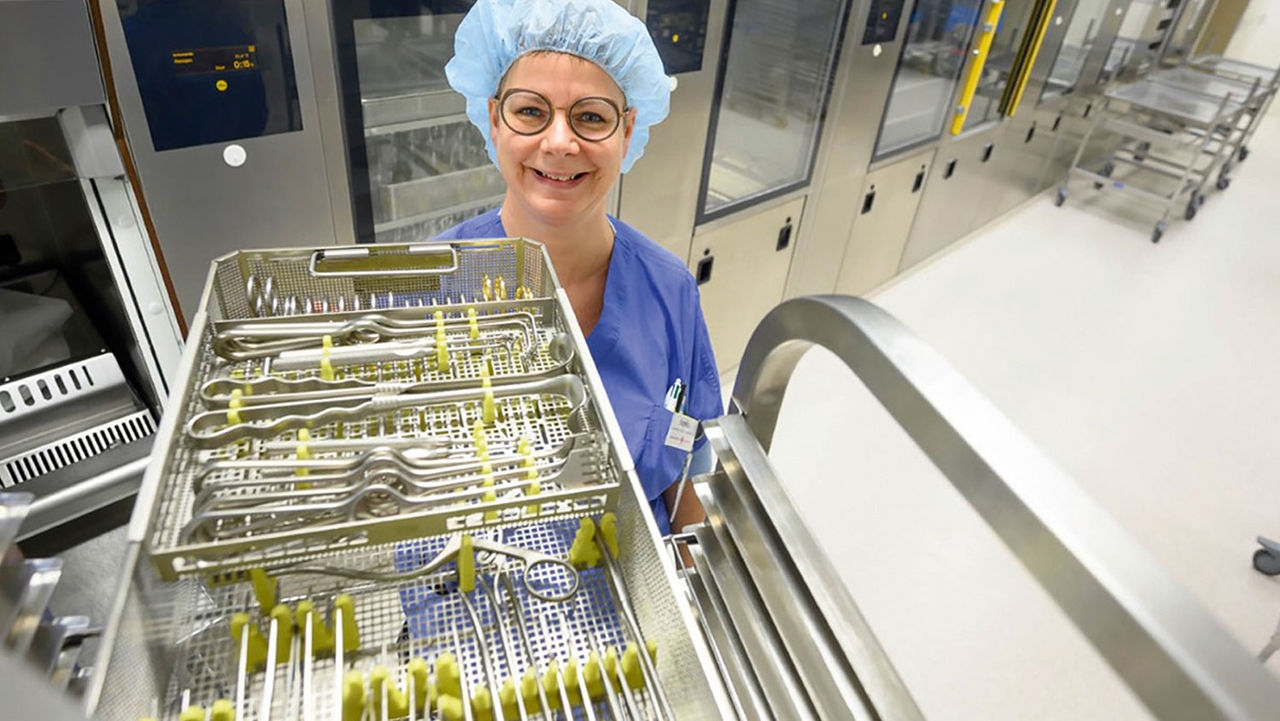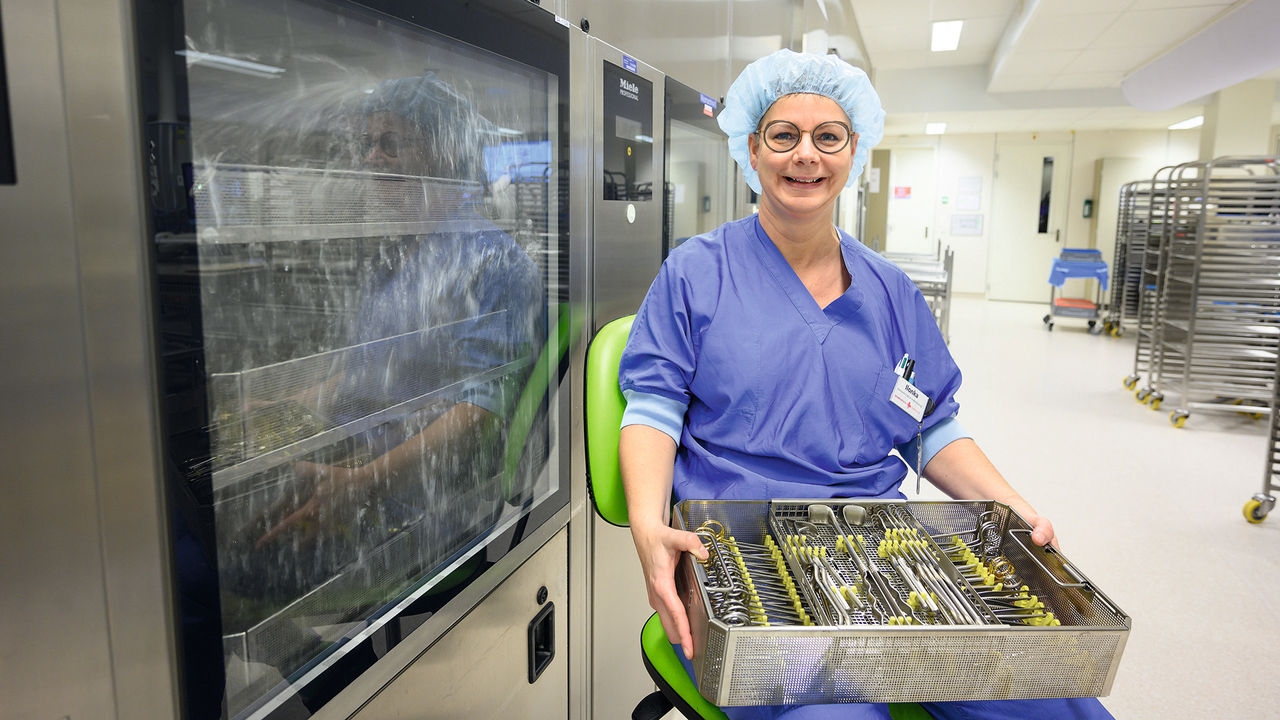No content results match your keyword.
Content
You have successfully logged out.
Not registered yet?
Set Consulting - Jeroen Bosch Hospital
Standardization and optimization of surgical instrument sets takes a lot of time, but according to Ilonka van Kasteren, it's all worth it. During this project Ilonka worked as the head of the CSSD at Jeroen Bosch Hospital: 'They are now reaping the benefits of these efforts: a huge reduction in instruments and sets, a better view of completeness via the InOs® and digitization and reduction of costs. An incredibly practical system. The project manager is proud; nobody wants to go back to the old situation.'

Reduction of instruments
0%
4.262 instruments
Reduction of sets
0%
100 sets
First, back to the old situation, what did it look like? 'A mess.' Ilonka can't sugarcoat it. ‘All equipment from three hospitals was combined. The result was a huge mess of sets, instruments, brands, with and without item codes and in varying states of repair. Not that it was unsafe, but it was a mess. There had been streamlining in the past, but I knew it could be much better.' Ilonka gained that knowledge at Máxima Medical Centre, her previous employer which had already completed this process. 'I wanted to sink my teeth into it at the Jeroen Bosch Hospital.' In April 2018 Ilonka started the preparations: supplier selection and setting up a project and steering committee. In April 2019, the intensive two-year process of standardization and optimization of surgical instrument sets began with B. Braun as a supplier and partner.

Why B. Braun? Ilonka didn´t have to think long. ‘From the very beginning of the supplier selection process they stood out from other parties. It soon became clear to everyone that B. Braun had the most experience and expertise to manage the entire process.’ Even after the project was awarded to B. Braun, no one questioned the choice. Ilonka: ‘Of course there are discussions from time to time, but it is a complicated and long-term process. It´s nice if your supplier is open to feedback and improvement. Friction was allowed and views expressed on both sides, but it never stuck. The team was eager to learn and made great strides in the digital arena. They were always looking at what was possible and this attitude created a flow that made working together fun.’
Based on the analysis and inventory – an important phase according to Ilonka – the goals were set. The most important ones were to have all instruments at the right quality level and to reduce the number of instruments by 20%. Ilonka: 'Both goals were achieved, within time. And that during the corona pandemic,' says the proud project manager. She quotes the exact figures. 'The number of instruments was reduced by 28% from 15,456 to 11,194, and the number of surgical instrument sets by no less than a hundred sets, from 527 to 427. This was mostly due to the constructive approach and resolute agreements with the OR team, who were also on the steering committee. The fact that the CSSD is part of the OR-team plays a role. We were able to be strict and take a focused approach. There was some resistance from the specialists at first, but everyone knew they had to make a good case for adding more instruments to a set. It was very well coordinated in advance with the OR assistants, the specialists, and others involved; each specialty was given extensive time to review. The OR assistants played a valuable role in this; you really have to give them the time they need.’
Sustainability was not on the list of goals before this project, but it is now an important issue. Ilonka summarizes: ‘We have been able to make really significant savings, just think of the number of sets we have now. There are fewer on the shelves and because we have more uniformity in the sets, we can now work with a packing robot that cuts exactly to size. We have also reduced the number of peel packs by 25%. Instruments that were still in good condition were donated to aid organizations, and rejected material was melted down and recycled by B. Braun. Nothing was thrown away.’

When asked about the biggest bottlenecks in the process the ambitious manager mentions the halfway point. ‘If you have already overhauled and optimized half of the sets, but not yet all of them, then you have to keep the sets separate.’ The project group got the necessary tips from B. Braun. ‘They helped set up the cabinets and thought about the minimum and maximum stocks levels. Our instrument manager was also part of the project group and photographed, coded and entered everything into the Instrument Management System. An investment that we still enjoy every day. Everything also depends on a constructive approach and resolute agreements with the various disciplines, for example.’ Some wanted us to make concessions, but we always said, "We are not a candy shop"
In the beginning, Ilonka also had to convince her own team as they were expecting a lot of concerns. 'People asked for extra information in advance, but once we had the system in place, nobody wanted to go back. People find it quicker and easier to work with because there is more clarity with the standardized sets, and of course, the InOs®. We get complete sets back more often, and missing items are easier to find and track.' A tip from Ilonka: Make sure that someone from the CSSD is in your project group, this ensures more support.
A key success factor, says Ilonka, is the quality of the steering committee and project group. ‘Invest in this because a project like this takes a long time. Which experience is important and, who has a mandate? And also: who enjoys such a process? Tap into that enthusiasm and when you talk about success factors, always keep the timeline alive.’ The project manager explains. ‘Always share: where we are, what we already achieved, what we are proud of and what we learnt. Celebrate the successes and from there keep looking at where you want to go. This keeps the process alive and ensures that you get everyone involved in your process.’ She also recommends including someone from your supplier on the steering committee. ‘This has worked perfectly for us. I understand that B. Braun is now recommending this structure to other customers. That´s a very smart thing to do because it´s nice to have your supplier as a full partner.’
Ilonka has a new job, but she leaves the Jeroen Bosch Hospital with a sense of satisfaction. ‘The project is officially finished, the goals have been more than achieved. I am really proud of the whole group. At the same time, you know it's never really done, you have to keep innovating. But with a fullservice contract now in place, you can be sure that your sets and instruments are at the highest quality level. And, not insignificantly, we have made substantial cost savings. I can´t give you hard figures, because we have moved to a new procurement system and because the cost structure looks different now.’
When we ask if she has any advice to give to her successor, she says that you have to be vigilant about ‘contamination’ of the sets. ‘Before you know it, new clips or instruments will be added, that desire will always remain but I´m confident that won't happen. The new way of working is well integrated throughout the chain of supply, it really doesn't depend on a new head in the CSSD.
Your feedback matters! Participate in our customer survey to help us enhance our website, products and services. Thank you for your support!